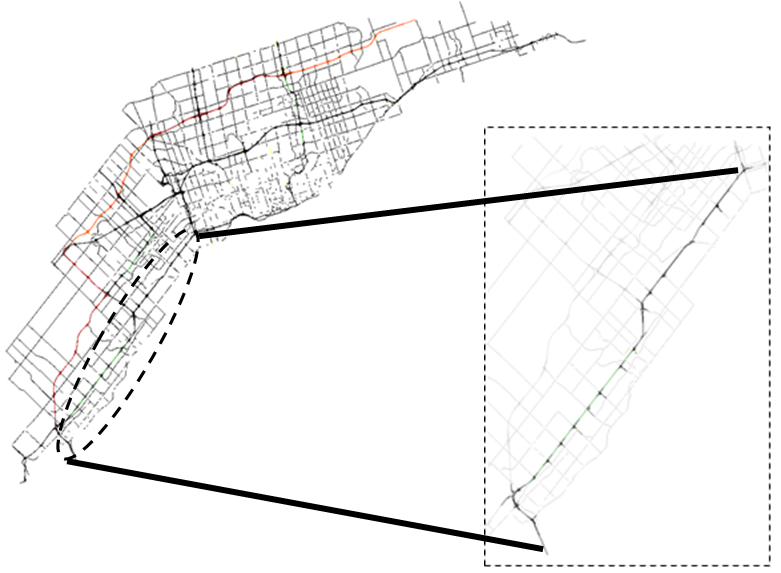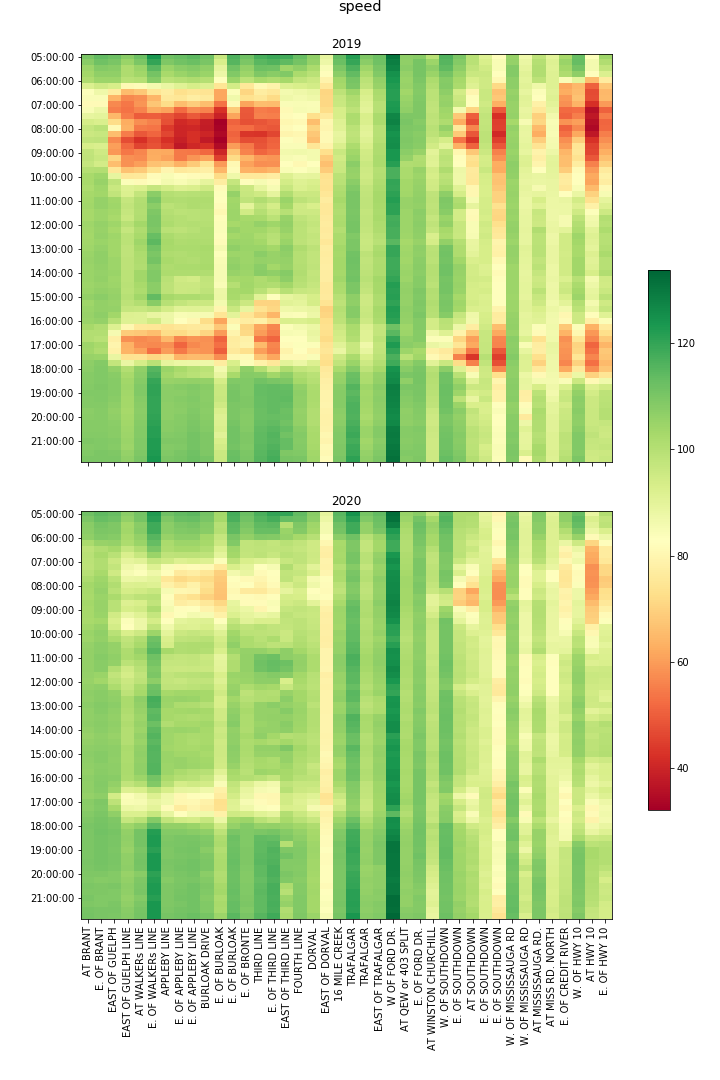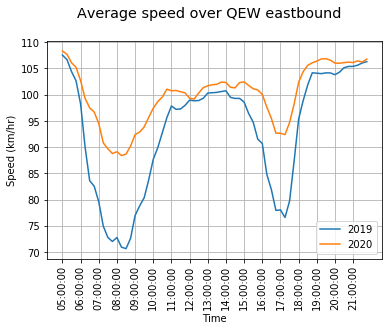
Traffic and speed patterns in the GTHA have changed dramatically since COVID-19 restrictions came into effect.
Much of the GTHA workforce no longer needs to travel to work, due to a combination of nonessential business closures and working from home. Students no longer need to travel to school, having transitioned to online learning.
When venturing out for essential work and to purchase necessities, drivers find roads much emptier than before COVID-19.
Crawling traffic during rush hour has disappeared and traffic speeds, not surprisingly, have visibly improved.
A quantitative analysis of the traffic on GTHA’s major highways by Senior Research Associate Dr. Islam Taha and UTTRI associated faculty Professor Baher Abdulhai reveals the extent of changes.
Comparing data for the GTHA’s major freeways: March 2019 and March 2020
Dr. Taha and Professor Abdulhai compared traffic detector data, from major freeways across the GTHA, for March 2020 with March 2019.
Speed on QEW eastbound
The researchers first looked closely at speeds on the QEW eastbound.

Speed “hot spots”
Figure 1.b is a speed “heat map,” a plot of traffic speeds over time (Y-axis) and location (X-axis) for the eastbound direction of traffic. Green color indicates high speeds, yellow indicates moderate speeds and red indicates slow speeds.
Not surprisingly, 2019 data reveals four congestion “hot spots” where speed is greatly reduced: two in the morning peak and two in the afternoon peak.
In contrast, in 2020, the four hot spots almost disappear.

Average speed
Figure 2, below, shows the average speed across the freeway. In March 2019 the average dips down to 70 km/hr during the morning peak, while in March 2020 speeds do not drop much below 90 km/hr.

Similar trends across all GTHA freeways
The trend is similar across all freeways in the GTHA, to varying extents, as shown in Table 1 and Figure 3 below.

Will congestion return to “normal” post-COVID-19?
Dr. Taha and Professor Abdulhai anticipate that traffic congestion is likely to return once COVID-19 restrictions are lifted. There is no hard data to support their speculation; rather, it is more expert intuition. They expect and caution that congestion may even increase if more commuters opt to drive to avoid public transit.
